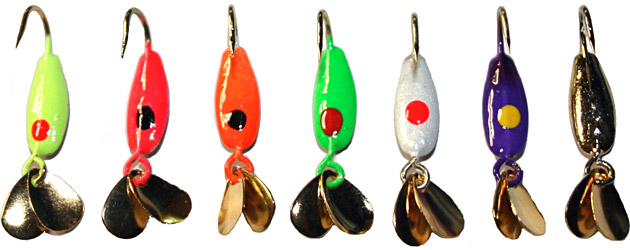Panfish Transition Under the Ice

Deep water, shallow water flats, suspended fish or bottom hugging fish – what is the answer in locating winter panfish under the ice? It depends on a few variables and the species. Once old man winter grabs hold of a lake, the lake goes through changes.
First ice often places the fish shallow. Any green weed bed draws fish. After a month of ice the lack of sunlight cause the weeds to die off. With lowered oxygen levels and the reduction in plankton, the panfish scatter.
Some will still use the shallows and under a falling barometer or just prior to a storm the shallows can be really good. The best shallow water is the area of the lake with the most sunlight. More plankton, more fish. It really is that simple.
Points, both visual points and underwater points are perhaps the best location during this transition period. Panfish can move up and down the point depending on the type of plankton and the oxygen level.
The closer a point is to a large flat the better the action. Deep points often have a few green lingering weeds along the sides that attract fish. Drop-offs and tapering points are good picks for crappie. A good graph really helps in the search. With a quality graph it is very common to actually see the fish rise up to your bait. My Humminbird fits the bill.
The best winter action is in depths between 15-30 feet. Dusk and dawn will often find the largest bluegill roaming near the bottom. They might be in 15 feet or the 30 foot depths but often within a foot or two of the bottom.
As the day warms up bluegills will rise up to feed on the moving plankton. With additional sunlight various forms of plankton will filter through and be suspended at various depths. This is where a good graph comes in handy. Suspended gills will show up quickly on a good unit.
Crappie love to suspend. Some days they are right under the ice but most often someplace between the half way point and 3 feet of the bottom. Under low light conditions crappie will suspend over a deep flat or a deep point.
During the midday hour’s crappie will move out and away from this structure. Ten to thirty feet out from a point or a drop-off is about right. Venture out with your graph for these midday suspended fish.
Anglers chasing either bluegills or crappies benefit from the use of a teardrop jig in sizes ranging from tiny size sixteens to larger size tens. The smallest size teardrop jig works great for shallower fish or fish suspended near the surface. Deep water applications require a slightly larger teardrop to get down there in a reasonable amount of time.

This is where a tungsten teardrop jig comes into play. Tungsten is heavier than lead so you can use a smaller profile jig. One of the hottest lures on the ice this year is the Pelkie Tungsten jig.
An alternative to this lure would be the Sitka Shad. With a very slender profile, it darts and dances to a different tune. Both are available from Stopper Lures.
A maggot will add attraction to bluegill and crappie. Squish a maggot for scent. Dangling two on a teardrop jig with a subtle jigging action will fill the pail.
Transition panfish are on the move. You will need to follow the plankton to stay with the fish. Each day you may find the fish in a new location. For more success in your ice fishing for panfish concentrate on the points, drop-offs and deep flats while watching for suspended fish.
Story by: Jack Payne





